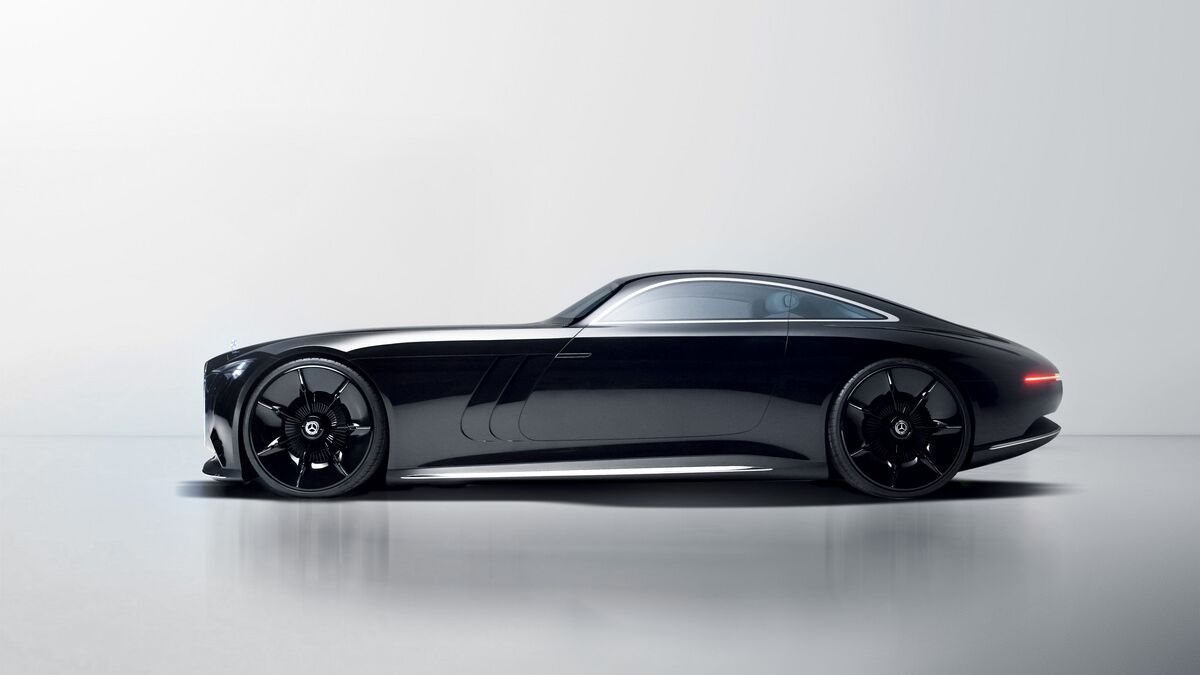- The Mercedes-Benz Vision Iconic Concept uses photovoltaic paint so that its entire body recharges its battery
- It’s just a concept car for now, too expensive to mass-produce today
For engineers, environmental scientists, and nerds of all stripes, the real promise of electric cars is that they let you power your transportation off nearly any energy source.
A gas-powered car can only turn potential energy into kinetic energy if it’s stored as hydrocarbons. An electric car can use whatever powers the electric grid where it is.
Functionally, EVs run on everything from coal to wind power. As America’s energy grids evolve, electric vehicles (EVs) won’t need to change. They should be relatively immune to most forms of change and energy shortage.
In the future, they might even run on the power of the sun.
Mercedes has taken this idea to extremes with a new concept car.
The company designed its Mercedes-Benz Vision Iconic Concept for many purposes. It shows how the brand might draw on its heritage for future designs. It tests Level 4 self-driving — automation that lets the car drive itself without any human control on pre-mapped routes.
And it recharges itself from its paint.

A Thin Solar Cell of Any Shape
- The technology relies on a thin layer of photovoltaic material infused into the paint
- It doesn’t add much range with current technology, and costs a fortune, but it’s early in development
The technology, Mercedes says, involves a photovoltaic material “similar to a wafer-thin paste” used in the paint.
The amount of paint used to cover a midsize SUV, Mercedes says, could generate enough energy to cover about 7,450 miles of driving in a year under the right conditions.
That’s not much — the average American drives about twice that range in a month. However, the technology is new and could improve over time.
For now, it’s too expensive to mass-produce. Jochen Schmid, Mercedes-Benz senior manager for future electric drive, told Automotive News, “We still need to do a lot of research because we don’t want to come up with a solution that adds another €10,000 to the vehicle, because then the total cost of ownership for the customer is not going to be very attractive.”
€10,000 is equal to about $11,535 today.
It also works well only with dark shades — “If you go from black to blue, you might see around a 5% drop in performance,” Schmid said. “White would carry the highest burden.”
All technologies grow more affordable as they’re mass-produced.
Solar Roofs Exist Today, but Aren’t Efficient
- Toyota and recently bankrupt Fisker have offered solar roofs for sale, but they add even less range
Similar technology exists today on a smaller scale. The Toyota Prius and the Ocean SUV from recently bankrupt automaker Fisker are already on the road with solar cells embedded in their roofs.
The designs, however, are strikingly ineffective. In recent KBB testing, a Prius plug-in hybrid (PHEV) added one mile of range in 48 hours parked outdoors in a mid-Atlantic summer.








